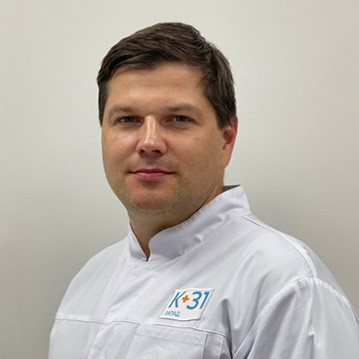Catheterization of the auditory tube

specialists

equipment

treatment
What happens when there is pathology in the auditory tube?

The narrow auditory canal performs an important function in maintaining the pressure balance in the middle ear cavity behind the eardrum; it provides drainage and ventilation of the tympanic area. The channel is involved in the functions of hearing and speech.
What happens during pathology:
- Inflammation of the canal membrane leads to blockage of the lumen. Fluid and pus accumulate in the tube. A person hears them as gurgling, clicking, noises, rippling water
- Inflammation of the middle ear also causes blockage of the tube. In this case, fluid accumulates in the cavity behind the eardrum, leading to severe pain and changes in hearing. With strong fluid pressure, fistulas and perforation of the eardrum can occur. Prolonged stagnation of fluid and pus leads to irreversible consequences - the formation of adhesions. This causes hearing loss and even deafness
When the canal is blocked, hearing, speech, and swallowing functions are impaired, and increased pressure in the deep parts of the ear leads to headaches and complex inflammation of the middle ear with life-threatening consequences. Therefore, ear catheterization is an opportunity to quickly improve a person’s condition and prevent complications.
How is catheterization performed?
The procedure does not require the patient to be admitted to a hospital. After preparatory measures and anesthesia, the patient is seated on a couch or a special ENT chair.
The main instrument for the minimally invasive procedure is the Hartmann ear cannula. A metal catheter for catheterization of the auditory tube has a funnel-shaped dilator and a slightly curved “beak”, which is used to search for the mouth of the tube. The instrument is sterile and thin. The doctor has several types of such catheters to select the required length, thickness and degree of curvature.

- The duration The duration of the procedure is 10-20 minutes
- Result After removing the catheter, no additional treatment of the nasal cavity is required. After a short rest and examination by a doctor, the patient can go home
The doctor inserts a pre-selected catheter for the auditory tube into the nostril downwards with the “beak” and carefully moves it along the lower passage of the nose back to the nasopharynx
When the instrument reaches the nasopharyngeal space, it is carefully moved towards the nasal septum so that the “beak” touches its edge. There is the mouth of the auditory tube. Entry into the pipe is confirmed using a visualizer - for example, radiography
After the catheter is in the mouth, the doctor probes the cavity, injects a small amount of air using a Politzer balloon, and then listens using a special acoustic instrument - a Lutze otoscope.
In order to evaluate the drainage function, a dye solution, for example, methylene blue, is poured into the pipe. With intact drainage, it will appear in the nasopharynx in about 7-10 minutes
If it was planned to catheterize the auditory tube with the administration of medications, at the final stage of the manipulation the cavity of the tube is washed with the necessary solution using a syringe

Preparations for the rinsing procedure
- Antihistamines are used to prevent allergic reactions and swelling
- Vasoconstrictor drugs are necessary to relieve swelling and anemia of tissue
- Anti-inflammatory, antibacterial solutions are used in the treatment of infectious and inflammatory processes
- Catheterization of the auditory tube with dexamethasone and dimethyl sulfoxide has a beneficial effect on eustachian tube dysfunction and otitis
- Hormonal preparations in solutions will be useful in the treatment of extensive inflammation and autoimmune processes
Catheterization of the eustachian tube in “K+31”
Therapeutic and diagnostic catheterization of the auditory tube is one of the popular services of the K+31 clinic, which is performed by experienced ENT doctors. When performing the manipulation, we ensure maximum comfort by individually selecting anesthesia methods.
The average price for catheterization of the auditory tube in Moscow depends on the medications and consumables used, the complexity of the procedure, the type of anesthesia, and the quality of the equipment.
We keep prices in the average range, so with high quality medical services, the price of catheterization of the auditory tube and other procedures at K+31 is affordable to all patients.


How is an appointment with an otolaryngologist at K+31?
Our doctors

This award is given to clinics with the highest ratings according to user ratings, a large number of requests from this site, and in the absence of critical violations.

This award is given to clinics with the highest ratings according to user ratings. It means that the place is known, loved, and definitely worth visiting.

The ProDoctors portal collected 500 thousand reviews, compiled a rating of doctors based on them and awarded the best. We are proud that our doctors are among those awarded.
Make an appointment at a convenient time on the nearest date
Price
Answers to popular questions
Can there be complications?
This procedure is performed by experienced, qualified otolaryngologists, so the risk of complications is minimal. Consequences may be due to sudden movements of the patient during the procedure, which can lead to injury to the mucous membranes of the nasal cavity.
What complications can occur after catheterization of the auditory tube:
- Nosebleed
- Tinnitus, dizziness due to the introduction of air and medicine into the tympanic cavity
- Air entering the subcutaneous fatty tissue. The condition does not require treatment, the air resolves after 2-3 days
- Infection
During the procedure itself, the patient will feel discomfort associated with the advancement of the instrument in the nasal cavity. However, high-quality anesthetics will reduce these sensations to a minimum and will not allow you to feel pain.
Bleeding after the procedure is stopped in the doctor's office with nasal packing.
How many sessions are required?
Minimally invasive catheterization of the ear and Eustachian tube for diagnostic purposes is performed once.
If the procedure is prescribed for therapeutic purposes, then catheterization of the auditory tube with the administration of medications is prescribed in a course of 2 to 10 procedures, depending on the type of disease.





























About the service